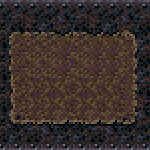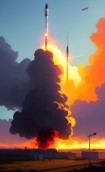|
I still want to know what life would have been like with the A-12 reaching production.
|
|
|
|

|
| # ? Apr 24, 2024 20:05 |
|
mlmp08 posted:Sequester was about 4 years after the bail in the F-22 production line’s coffin. was he mad he never would crash one
|
|
|
|
mccain hated it because he’d never be able to crash one
|
|
|
|
|
Naramyth posted:was he mad he never would crash one DOD missing an opportunity to do NASA-style senator ridealongs for bombing third world nations. (gwb-flightsuit.tiff)
|
|
|
|
bewbies posted:in my opinion, Cheney killing off the F-14 was a far more egregious sin Is this purely out of aesthetic sensibilities? To take this seriously for a moment, if the F-14D had survived, we'd now be dealing with clapped out 30 year old swing wing jets and figuring out how to replace those with F-35Cs or whatever the Navy's new air superiority fighter is. I don't know that our approximate position today would be that different.
|
|
|
|
mlmp08 posted:And at that time, the F-22 had never been used in combat despite years of war. It looks to me like it was introduced into service in 2006, three years after anything resembling an enemy Air Force existed in Iraq or Afghanistan, and the program was cancelled in 2009. Like yes you are right it wasn't used in combat but what a dumb justification if that's what it was. The nuclear submarines have never been used in combat either but we sure keep those around
|
|
|
|
Sagebrush posted:The nuclear submarines have never been used in combat either but we sure keep those around Well, the first four Ohios ~kinda~ have, but only after taking the Tridents out.
|
|
|
|
A hypothetical f-14e probably would have been a better buy for the navy tbh.
|
|
|
|
Stairmaster posted:A hypothetical f-14e probably would have been a better buy for the navy tbh. Makes me wonder what you could do if you took the F-14 and engineered out the swing wings what you could get. I'll start doodling in my trapper keeper and let you guys know the results.
|
|
|
|
Explosionface posted:Makes me wonder what you could do if you took the F-14 and engineered out the swing wings what you could get. I'll start doodling in my trapper keeper and let you guys know the results. An F-15E.
|
|
|
|
Sagebrush posted:An F-15E.
|
|
|
|
Explosionface posted:Makes me wonder what you could do if you took the F-14 and engineered out the swing wings what you could get. I'll start doodling in my trapper keeper and let you guys know the results. Ace Combat.
|
|
|
|
Sagebrush posted:The nuclear submarines have never been used in combat either but we sure keep those around The SSNs may be some of the most engaged with potential adversary systems in the arsenal. From sigint ops to delivering covert types to place to just poking their noses in places they don't belong and dogging other navy's they get around. edit: And then there have been the various cruise missile strikes over the years.
|
|
|
|
bewbies posted:in my opinion, Cheney killing off the F-14 was a far more egregious sin Mortabis posted:To take this seriously for a moment, if the F-14D had survived, we'd now be dealing with clapped out 30 year old swing wing jets and figuring out how to replace those with F-35Cs or whatever the Navy's new air superiority fighter is. I don't know that our approximate position today would be that different. The thing is that Cheney did it exclusively because Grumman is based in a place that votes democratic rather than republican, and therefore any military hardware produced there was an, actual quote, 'jobs program'. I can think of three times I agreed with the dude, and even one of those Cheney arrived at the right answer through pure partisanship
|
|
|
|
Murgos posted:The SSNs may be some of the most engaged with potential adversary systems in the arsenal. From sigint ops to delivering covert types to place to just poking their noses in places they don't belong and dogging other navy's they get around.
|
|
|
|
Sagebrush posted:It looks to me like it was introduced into service in 2006, three years after anything resembling an enemy Air Force existed in Iraq or Afghanistan, and the program was cancelled in 2009. That talking point was more common among talking heads on news than one made by Gates or anyone else directly involved in the administration. Still, it wasn’t lost on a lot of people that the F-22’s first combat use was bombing an essentially undefended static target in 2014. Part of the calculus was, however, that the admin didn’t expect a near-peer war within 6-10 years of canceling the F-22. Basically argued for short term increased risk window in exchange for long term cost savings. E: https://twitter.com/salisbot/status/1364936036716056577?s=21 mlmp08 fucked around with this message at 02:51 on Feb 26, 2021 |
|
|
|
mlmp08 posted:Also did not help the F-22 line that Senator McCain hated the aircraft. A lot. No plane can match his perfect plane, the F-104
|
|
|
|
Friend of mine is reading Max Hasting's Vietnam book and he came across this anecdote. Just imagining "Uhhh...I think that's only fair" in the same voice Homer Simpson says "Yeah, they'll do that" when Ralph Wiggum complains of tar fumes making him dizzy.
|
|
|
|
Here's something that's probably a far more obscure part of the Cold War to most of you: Grunddispositiv Zeus ("Basic plan of operations Zeus"). There isn't much information about it online, but the gist of it, is that it was the overall deplyoment plan of the Swiss Army in case of a general mobilization. It it pretty much the definitve version of the Swiss Reduit National strategy that was first adopted during World War II : the Zeus plan was implemented in 1992, and by 1995, the Swiss Army had begun the first of it's many reforms that saw it's fully mobilised strength drawn down from the Cold War peak of over 650'000 to the current 100'000. Here's the plan in a simplified form, courtesy of Wikipedia:  This allows me to give a quick rundown of how the army was to be organised: the Border Brigades (Gz Br = Grenzebrigade) would mobilise first, and occupy strong points on the border in order to cover the mobilisation of the rest of the army. The low lying parts of the country would be the area of operations of the 3 Field Army Corps (FAK = Feldarmeekorps). These would be made up of Mechanised Divisions (Mech Div = Mechanisierte Division), Field Divisions (F Div = Felddivision), Border Brigades, and various independant units. The Alps were the area of operations of the Mountain Army Corps (Geb AK = Gebirgs Armeekorps), which itself was composed of Mountain Divisions (Geb Div), Fortress Brigades (Fest Br = Festungsbrigade), Reduit Brigades (R Br = Réduitbrigade), Border Brigades, and independant units. And here's the actual operational map in all it's glory:  You can find the entire map here, in webpage form. Now, what exactly is a Fortress Brigade ? They 10th and 13th brigades manned the enormous fortress complexes dug into the Alps at the chokepoints of the main river valleys leading into the central massif, while the 23rd was the very heart of the Réduit, occupying the vast complexes around the Gotthard Pass. Here, we can see the area of operations of the 10th Fortress Brigade:  The main fortress complex that the 10th was responsible for is arrayed on both sides of the Rhône valley, right where the big brigade staff icon is placed. Hundreds of other bunkers of various sized were placed as a defense in depth starting on the shores of Lake Geneva. And here's the area of operations of the 13th Fortress Brigade:  Pretty similar to the 10th, but I'm far less familiar with them. I'll use this as an opportunity to point out that Switzerland didn't place much importance in interoperability (for some strange reason), and thus had it's own set of tactical symbols (and phonetic alphabet, and pilot abbreviations, etc). So, going clockwise from Liechstenstein, we have: the 62nd Infantry Regiment (reinforced); the 6th Infantry Battalion; the 2nd Infantry Company, 77th Battalion; the 20th Fortress Artillery Regiment; the 37th Infantry Regiment; the 72nd Infantry Regiment (reinforced); 13th Fortress Brigade Headquarters; 77th Independant Mountain Infantry Battalion (reduced). The Artillery Free Fire Zone (AFFZ = Artillerie Feuerfreizone) is probably exactly what it says on the tin. It's situated far more logically than it's counterpart by the 10th (notated ZTLA = zone de tir libre d'artillerie), as it actually covers the plain, and not some random mountainside. Finally, I'll leave you with my personal mystery:  Whereas every other unit on the map has a normal name, Basel is host to an infantry regiment that goes by the cool name of BASILISK.
|
|
|
|
A bunch of years back I visited one of the WW1/WW2 era border forts they had near the German border. That was loving impressive and if it's anything to go by I have to assume that the late cold war versions would have been terrifying to crack with anything short of nukes. I'm unconvinced that the Swiss aren't just hairless, unusually tall dwarves. fake edit: I've got a Swiss Civil Defense book sitting around somewhere from the late 70s/early 80s that covers what to do on the civilian side of things in case of WW3. It's an interesting read to say the least.
|
|
|
|
Cyrano4747 posted:A bunch of years back I visited one of the WW1/WW2 era border forts they had near the German border. That was loving impressive and if it's anything to go by I have to assume that the late cold war versions would have been terrifying to crack with anything short of nukes. I got to spend a night in the Festung Waldbrand during officer school endurance week. It's now a private military museum, and is probably the only operational privately owned artillery battery in the world, or so the guide claimed (the government apparently forgot to render the guns inoperative before they sold the fortress). It really drove home how loving miserable life must have been inside these bunkers: cold, humid, extremely loud, and submarine tight sleeping quarters (enlisted men would hot-rack). Oh, and you would disappear down there for 3 weeks at a time for you annual military course and be strictly forbidden from telling anyone what you did during that time. Here's documentary in German about the Gotthard fortress complex: https://www.youtube.com/watch?v=cj61b6w7Xtk And yeah, the Civil Defense side was nuts. I remember finding diagrams in a civil defense shelter for shelters with thousands of beds. And then there's the infamous Sollenberg Autobahn bunker, designed to shelter 20'000 people. It was too ambitious and was rapidly decomissioned. https://www.swissinfo.ch/eng/in-case-of-emergency_the-forgotten-underground-world-of-swiss-bunkers/42395820
|
|
|
|
Noosphere posted:I got to spend a night in the Festung Waldbrand during officer school endurance week. It's now a private military museum, and is probably the only operational privately owned artillery battery in the world, or so the guide claimed (the government apparently forgot to render the guns inoperative before they sold the fortress). It really drove home how loving miserable life must have been inside these bunkers: cold, humid, extremely loud, and submarine tight sleeping quarters (enlisted men would hot-rack). Oh, and you would disappear down there for 3 weeks at a time for you annual military course and be strictly forbidden from telling anyone what you did during that time. There's a civil defense bunker museum in Zurich that is worth the trip if your'e anywhere near it. IIRC it dates from early WW2 and was updated during the Cold War as a "probably safer than your apartment?  " level nuke shelter. " level nuke shelter.
|
|
|
|
Noosphere posted:Now, what exactly is a Fortress Brigade ? They 10th and 13th brigades manned the enormous fortress complexes dug into the Alps at the chokepoints of the main river valleys leading into the central massif, while the 23rd was the very heart of the Réduit, occupying the vast complexes around the Gotthard Pass. You're job in one of these in the event of all hell breaking loose is either 1. Die or be captured quickly because the Ruskies know you're there and have a good plan for countering you 2. Die or be captured a little less quickly because the Ruskies know you're there and have a bad plan for countering you but if they are coming this way they will be throwing more at you than you can handle 3. Nothing really, they aren't coming this way, maybe a probe or two just to keep you honest and sitting tight denying you as reinforcements elsewhere
|
|
|
|
While I'm on a posting roll, here's an article about the insanity that was the Swiss photoreconnaissance squadron. I've sourced it from the 12th issue of 2003 of the Allgemeine Schweizerische Militärische Zeitschrift. fake edit: after translating it, it turns out that he unfortunately doesn't go into detail about what this squadron was supposed to do if the Cold War went hot. In short: Switzerland was de facto on the NATO side. Not that we'd actively fight on their side, mind you, but all our war plans were aimed mostly at keeping the 420th Guards Tank Army from rolling into Bern. As such, Switzerland was very interested in knowing when and how said army would show up on our doorstep. The Mirage IIIRS was supposed to fly as low and as fast as possible, over the quite likely nuclear wasteland of southern Germany, in order to gather reconnaissance data. Oberst Hanspeter Rückli posted:It’s the end of an era. 40 years ago, Swiss pilots flew the then hyper modern Mirage for the first time in France. The reconnaissance version, the Mirage IIIRS (Reconnaissance Suisse) flew in Swiss skies for the first time 38 years ago. The Mirage reconnaissance pilots who’s call sign was “AMIR” (Aufklärer-Mirage) were a peculiar specimen of pilot. Being totally self reliant, having to fly only a handful of meters above unknown territory in order to find one’s exact objective, and thereafter having to return to base with the required pictures – that was a great challenge in every flight. Colonel Rückli is such an “AMIR”. With his 23 years experience with the Mirage IIIRS, he is without a doubt the most qualified person to write about this most extraordinary aircraft. https://www.youtube.com/watch?v=MQU1f_bgPFE https://www.youtube.com/watch?v=vvpuQAx7pxs Murgos posted:You're job in one of these in the event of all hell breaking loose is either Agreed. Much of what Switzerland did was product of the obsession with the Réduit which many maintain to this day is all that kept the Germans from invading during World War 2. The reality is of course far more nuanced. Nevertheless, the relative futiliy of our fortresses was slowly realised after the end of the Cold War, and they were progressively decommissioned. The last fortress artillery battalion was disbanded by 2011. https://www.mediathek.admin.ch/media/video/b0543904-19e4-4d6b-b7ae-757d449ab5c6 Noosphere fucked around with this message at 01:24 on Feb 27, 2021 |
|
|
|
quote:Foreign deployment This is peak swiss, right here.
|
|
|
|
Thanks for that, fascinating stuff! Given Switzerland's focus on neutrality, did the air force have to do all their training inside Swiss territory? Seems like it might be tough to find enough space for some exercises.
|
|
|
|
EasilyConfused posted:Thanks for that, fascinating stuff! You're welcome ! I'm glad you liked it  To the extent of my knowledge, the Swiss Air Force bascially never left Swiss air space until after the end of the Cold War. It meant for limited training opportunities, but at least they knew their mountains inside and out. The Mirages IIIRS that went sent to the museum got a pretty cool paintjob. 
|
|
|
|
Cyrano4747 posted:I'm unconvinced that the Swiss aren't just hairless, unusually tall dwarves. I'm pretty Dwarven women are treated better than the Swiss
|
|
|
|
FYI, there is a brand new thread in GiP for stories from national service here.
|
|
|
|
MikeCrotch posted:I'm pretty Dwarven women are treated better than the Swiss Women's rights in Switzerland took shamefully long to be recognised. Spealing of oddly conservative Switzerland, did you know that until 1995, the Swiss Army had a fully fledged (  )messenger pigeon service ? )messenger pigeon service ?The messenger pigeon as a telecommunications element of our army, 1988 posted:The usage of messenger pigeons for the military communications service relies upon their natural ability to find their way home from anywhere. In addition to hand-written messages, drawings, plans, film or other light objects may be carried. Messenger pigeon connections are independent of the nature of the terrain, as well as the position of the enemy. Flight speed is on average one kilometre a minute, in other words, faster than a courier but slower than telephone, radio or teleprinter. Through continuous improvements in breeding and training, the homing capabilities have been increased to the point that a distance of several hundred kilometres may be covered at any time of day and in any weather in a rapid and reliable fashion. Quite recently, experimental night flights have been conducted, giving astoundingly good results. The contemporary practical military application is to be as follows:  *yes, this is real. The original German sentence: "Selbstreproduzierender Kleinflugkörper auf biologischer Basis mit festprogrammierter automatischer Rückkehr aus beliebigen Richtungen und Distanzen." Gotta love that military jargon.
|
|
|
|
Swiss posts good, gonna add 'em to the OP Though I have to ask what the heck this is, exactly: quote:and the “Boule”, a revolutionary instrument allowing the pilot to understand his orientation in three-dimensional space. It was truly a stroke of genius by Dassault.
|
|
|
|
Nebakenezzer posted:Swiss posts good, gonna add 'em to the OP Doesnt “boule” just mean “ball” in French? I found this picture of a Mirage 2000 cockpit; is it that globe thing on the upper left? 
|
|
|
|
madeintaipei posted:FYI, there is a brand new thread in GiP for stories from national service here. I thought that's what the Idiots thread was for 
|
|
|
|
david_a posted:Doesnt “boule” just mean “ball” in French? I found this picture of a Mirage 2000 cockpit; is it that globe thing on the upper left? Yeah, it's just an artificial horizon that also shows your heading. It seems kind of gimmicky to me (e: in this context, ADIs are super important on spacecraft), but I guess the author really liked seeing yaw, pitch, and roll all on one instrument. Space Gopher fucked around with this message at 15:49 on Feb 27, 2021 |
|
|
|
Having all your angles in one place doesn't seem like a gimmick to me. Near as I can tell, every military aircraft from the mid 50s to the advent of putting data on the hud used an ADI. And obviously that same data is all on the hud now. Saving panel space was probably important too, so you could fit a radar display, RWR, moving map, weapons info, etc. I'm sure there are examples, but I can't find pictures of civil aircraft with an ADI, it seems they jumped from the six pack to glass From the quote it sounds like it was invented by Dassault, but I can't find anything to corroborate that.
|
|
|
|
You all inspired me to dig a bit more, and I found a fascinating monograph about the Mirage III (the fighter version) in Swiss service: https://www.amicaleaviation4.ch/html/1_4ea13.html. It's written by Fernand Carrel, commander of the Swiss Air Force from 1992 to 1999. The author also raves about the ADI, which he also refers to as BEZU. Googling that term didn't give me much. He also mentions that the fighter version of the Mirage flew often (by Swiss Cold War standards) in foreign airspace for training purposes: France in 1967; Sweden in 1977, 1981, 1986, 1991; Sardinia from 1985 to 1989; UK from 1990 to 1996. I don't want to smother the thread under walls of text, but I did find the following bit about the circumstances leading to the establishment of what could be called "Swiss Top Gun" amusing: Fernand Carrel posted:In November 1978, under the initiative the Chief of Intelligence of the Aviation and Anti-Aircraft Troops, Mr Rolf Lécher, the Israeli Air Force invited two Swiss pilots to familiarise themselves with the combat methods that allowed Israeli pilots to triumph over the Arab air forces. Two highly experienced Mirage IIIS pilots were chose for this mission: Colonel (General Staff) Leuthold and Major (General Staff) Carrel. They were hosted by the 117th Squadron at the Ramat-David air base, and each given three indoctrination flights on Mirage IIIBJ by two of the greatest aces of the IAF: Lieutenant-colonel Kobi Richter (commander of the 117th) and Major Eli Adar. The results are stupefying, and the Swiss pilots cannot believe their eyes. On the basis of data that was very kindly made available to the Swiss, the Israelis concluded that the only part of the flight envelope where the Mirage was superior to its traditional adversary the MiG 21 was both far below the minimum airspeed and far above the maximum angle of attack prescribed by the manufacturer, Dassault.
|
|
|
|
Noosphere posted:The Mirages IIIRS that went sent to the museum got a pretty cool paintjob. The eagle design is presumably derived from the Simplon pass statue  The Swiss Redoubt posts were great. Its amazing how many defensive features there are all over the place. I noticed these loopholes in an apartment block overlooking the autoroute when I was out running the other day.  I also noticed a bus stop that was extremely sturdily built out of concrete with a loophole in the back. And bunkers everywhere of course.
|
|
|
|
Murgos posted:You're job in one of these in the event of all hell breaking loose is either This plan is probably a tactical nuclear weapon
|
|
|
|
Noosphere posted:The Artillery Free Fire Zone (AFFZ = Artillerie Feuerfreizone) is probably exactly what it says on the tin. It's situated far more logically than it's counterpart by the 10th (notated ZTLA = zone de tir libre d'artillerie), as it actually covers the plain, and not some random mountainside. I love that you can't even pick a language for military poo poo here btw
|
|
|
|

|
| # ? Apr 24, 2024 20:05 |
|
feedmegin posted:This plan is probably a tactical nuclear weapon That is probably correct but given the terrain stands a good chance of making things worse for the attacker, assuming they actually want to hold the territory. St-Maurice is a real chokepoint and they would either collapse the mountain into the valley, or at least have to move straight through the newly irradiated ground. 
|
|
|








































